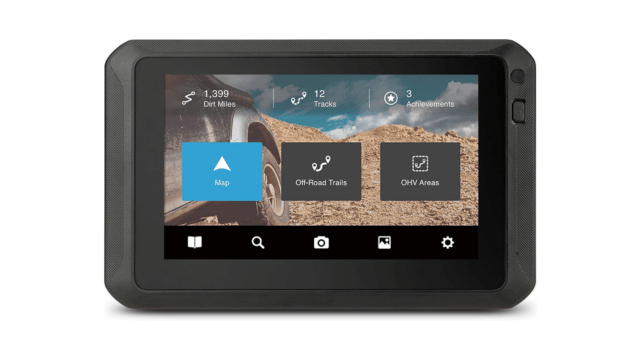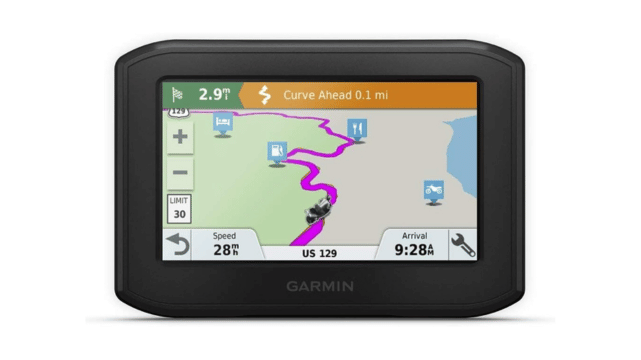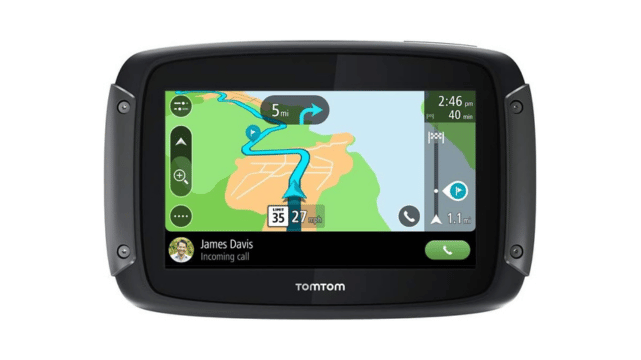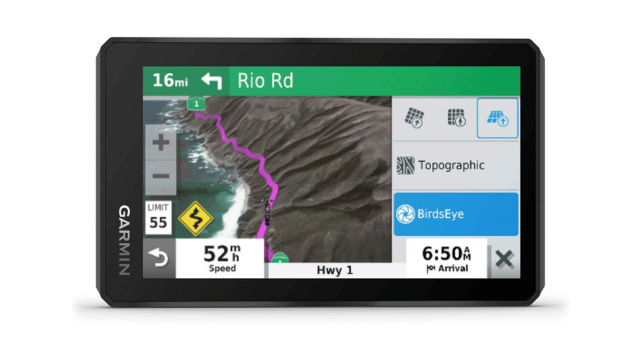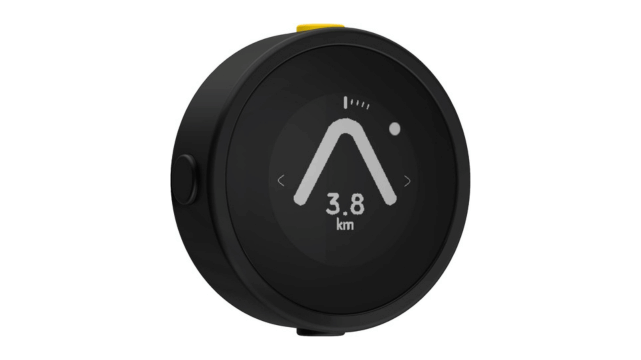When hitting the open road on a motorcycle, staying on track with directions can be a challenge. Unlike cars, motorcycles don’t have the luxury of large dashboards or easily accessible places to mount a GPS. This makes having a dedicated motorcycle GPS essential for a safe and enjoyable ride. These systems are specifically designed to handle the unique conditions motorcyclists face, such as exposure to the elements, the need for clear visibility in sunlight, and the ease of operation with gloves on. In this guide, we’ll walk you through everything you need to know before purchasing a motorcycle GPS, from key features to installation tips and common mistakes to avoid.
Best Motorcycle GPS Units Buying Guide
Durability and Weather Resistance
Motorcycle GPS devices are exposed to far more environmental hazards than those in cars. Rain, dust, mud, and even extreme heat can be commonplace when you’re out on the road. Therefore, it’s important to choose a GPS with a rugged, weatherproof design that can withstand these conditions. Look for units that are IP-rated for dust and water resistance, ensuring they hold up even in challenging weather. Additionally, the GPS should have shock-resistant housing to survive the vibrations and potential impacts experienced while riding.
Screen Size and Brightness
A motorcycle GPS should have a screen large enough to be easily visible, yet compact enough to avoid obstructing your view. Screen sizes typically range from 4 inches to 5.5 inches, which is a good balance between readability and size. Visibility under direct sunlight is another key factor. Many units now come with anti-glare displays and adjustable brightness settings, allowing you to see the screen clearly in both bright and low-light conditions.
Mounting Options
Mounting options are crucial when selecting a motorcycle GPS, as the device needs to be securely fastened to avoid any mishaps while riding. There are various mounting systems, such as handlebar mounts or windshield mounts, which cater to different types of motorcycles. Be sure to check whether the GPS comes with a mount compatible with your bike, or if you need to purchase one separately. The mounting system should also allow for easy removal of the GPS when not in use to prevent theft.
Battery Life and Power Options
Since you won’t always have the luxury of pulling over to charge your GPS, battery life is essential. Most motorcycle GPS units have built-in rechargeable batteries, but some also offer the option of hardwiring the device to your motorcycle’s power supply. If you’re planning long trips, it’s wise to opt for a unit with longer battery life, or one that supports both battery and direct power connection. This ensures your GPS stays operational throughout your entire ride.
Software and Map Updates
Having up-to-date maps and software is critical to avoid getting lost or encountering road closures. Many motorcycle GPS systems offer lifetime map updates, which allow you to download the latest maps for free. Frequent map updates are especially important for those who frequently ride in areas with new road developments. Additionally, some systems allow real-time software updates via Wi-Fi, ensuring you always have the latest features at your fingertips.
Ease of Use and Controls
On a motorcycle, controlling your GPS should be simple and intuitive. Whether you’re using touchscreen controls or physical buttons, make sure the device is glove-friendly, meaning it can be easily operated while wearing motorcycle gloves. Touchscreen units are becoming more popular for their ease of navigation, but physical buttons may still be preferable in wet conditions or when the screen gets dirty. Ease of use is a big factor in ensuring the GPS remains a helpful tool instead of a distraction.
Bluetooth and Connectivity Features
Modern motorcycle GPS systems come equipped with Bluetooth connectivity, allowing you to connect the device to your helmet’s intercom system or to your smartphone. This feature enables hands-free calling, receiving text messages, and even controlling your music—all while keeping your eyes on the road. For riders who frequently use smartphones, having a GPS unit that integrates seamlessly with other devices can be a game-changer.
Features to Look for in a Motorcycle GPS
Turn-by-Turn Navigation
At its core, the primary function of a GPS is to guide you from point A to point B. Look for models that offer turn-by-turn navigation with voice prompts. This feature allows you to keep your focus on the road while receiving clear directions in your helmet through Bluetooth. Some GPS systems even offer advanced lane guidance, helping you stay in the correct lane for upcoming exits or turns.
Offline Maps
For those who love venturing into remote areas, having offline maps is a must. This feature allows you to download maps in advance, so you’re never left without navigation even when you lose cell service. Many GPS devices come with pre-downloaded maps or allow you to download specific regions before you start your journey. This is particularly useful for long-distance touring in areas with limited network coverage.
Route Customization
Motorcycle riders often prefer scenic or curvy roads over highways, and some GPS devices offer specialized route options to cater to these preferences. Look for a GPS that allows for route customization, where you can select different types of roads, avoid highways, or even plan out routes that offer the most scenic views. This feature adds a layer of adventure to your ride, making the journey just as enjoyable as the destination.
Live Traffic and Weather Updates
Staying informed about traffic and weather conditions is crucial for safety on the road. Some GPS units offer real-time traffic and weather updates, allowing you to avoid traffic jams, road closures, or inclement weather. This feature can help you make smarter decisions about when and where to ride, ensuring a smoother and safer trip. Although this feature often requires an internet connection, many GPS systems can use your smartphone’s data plan to access real-time updates.
Points of Interest (POIs)
Whether you’re on a cross-country trip or a weekend getaway, knowing where to find nearby fuel stations, rest stops, or restaurants is incredibly useful. Most motorcycle GPS devices come pre-loaded with Points of Interest (POIs), helping you locate these essential stops along your route. Some units even allow riders to add custom POIs, such as favorite cafes or scenic viewpoints.
Integration with Smartphones
Many GPS units can sync with your smartphone via Bluetooth, allowing for seamless integration of notifications, calls, and messages. This connectivity lets you receive important updates directly on your GPS screen without having to take your phone out of your pocket. Some advanced systems even allow for voice commands, enabling a completely hands-free experience.
Speed Limit Alerts and Warnings
Maintaining safe speeds is essential, and some motorcycle GPS systems offer speed limit alerts and warnings. This feature not only shows the current speed limit but also notifies you when you exceed it. In certain areas where speed limits can change frequently, this feature adds a layer of safety, helping you avoid speeding tickets and ensuring compliance with local traffic laws.
Motorcycle GPS vs. Smartphone Navigation Apps
Durability and Weatherproofing
Smartphone navigation apps are a popular alternative, but they often lack the durability required for motorcycle use. GPS units designed specifically for motorcycles are built to endure tough conditions, such as rain, mud, and extreme heat. Most GPS units come with water and dust resistance ratings, ensuring they work reliably in adverse weather. On the other hand, smartphones need additional protection, such as waterproof cases, which may still not be as effective as a dedicated motorcycle GPS.
Battery and Power Usage
One major advantage of using a motorcycle GPS is that it consumes far less power than a smartphone running a navigation app. Smartphones tend to drain quickly when GPS is active, especially if you’re using other apps simultaneously, like music streaming or messaging. In contrast, motorcycle GPS units are optimized for power efficiency and often offer hardwired power options, ensuring they remain operational for longer rides without worrying about battery life.
Real-time Features
While smartphone apps can provide real-time navigation, they rely heavily on cellular data. Dedicated GPS systems offer offline navigation, speed alerts, and other specialized features that are particularly useful for motorcyclists. Unlike smartphones, GPS units don’t lose functionality in areas without cell coverage, making them more reliable for long-distance touring or rides in remote areas.
Mounting and Visibility
When it comes to mounting, smartphones can be more difficult to position securely on a motorcycle. Although phone mounts are available, they may not offer the same level of stability and visibility as mounts designed for GPS units. Motorcycle GPS devices come with dedicated mounts that are engineered for vibration resistance and are typically easier to view in various lighting conditions, thanks to anti-glare screens and adjustable brightness.
How to Install and Set Up Your Motorcycle GPS
Types of Mounting Options
The first step in setting up your motorcycle GPS is choosing the right mounting system. Handlebar mounts are the most common option, offering a secure and easily accessible placement for your GPS. For riders who prefer a higher viewpoint, windshield mounts are also available. Some GPS devices come with universal mounting systems, while others require specific mounts that are compatible with your motorcycle model.
Powering the Device
Motorcycle GPS units can be powered in two main ways: built-in rechargeable batteries or hardwiring to your bike’s electrical system. Hardwiring is ideal for long-distance trips, as it ensures the GPS stays powered throughout your ride without worrying about battery depletion. However, if you prefer a simpler setup, opt for a device with a robust battery life that can last through your typical riding sessions.
Configuring Maps and Routes
Once your GPS is installed, the next step is to configure the maps and routes. Most units come with pre-installed maps, but you may need to download additional regions depending on your travel plans. Route preferences, such as avoiding highways or selecting scenic routes, can be configured in the settings. Be sure to customize these settings according to your riding style to make the most of your GPS.
Syncing with Smartphones and Bluetooth Devices
For riders who use a helmet intercom or Bluetooth headset, syncing your devices with the GPS is an essential step. This allows you to receive turn-by-turn voice directions, hands-free calls, and notifications without taking your eyes off the road. Most GPS units offer simple, step-by-step pairing instructions that guide you through the Bluetooth setup process.
Top Benefits of Using a Dedicated Motorcycle GPS
Increased Safety
Motorcycle GPS systems are designed with safety in mind, offering hands-free operation and easy-to-read displays that allow you to keep your eyes on the road. Features like turn-by-turn voice navigation and speed limit alerts ensure that you stay informed and focused without unnecessary distractions.
Battery Conservation
One of the biggest advantages of using a motorcycle GPS is conserving your smartphone’s battery for emergencies. GPS units are built for efficiency, meaning you won’t have to worry about your phone dying mid-ride due to navigation use. In an emergency, having a fully charged phone can make a significant difference.
Route Flexibility
Motorcycle GPS devices offer customizable routes tailored specifically for riders. Whether you prefer scenic byways or want to avoid highways altogether, these GPS systems give you the flexibility to plan routes that match your preferences. Some units even suggest the best motorcycle-friendly roads based on your location.
Weather and Terrain Durability
Motorcycle GPS units are built to withstand the harshest conditions, from heavy rain to rugged terrains. Their weatherproof designs and shock-resistant materials ensure they keep functioning, no matter what Mother Nature throws at you. This level of durability provides peace of mind for those who love adventure touring or off-road riding.
Common Mistakes When Using Motorcycle GPS Systems
Not Updating Maps Regularly
Failing to update your maps can lead to outdated navigation information, potentially sending you down closed roads or routes with significant changes. Always ensure your GPS is running the latest map version before heading out on long trips.
Ignoring Firmware Updates
Much like smartphones, GPS devices require firmware updates to fix bugs and introduce new features. Ignoring these updates may result in missed improvements or even malfunctions, so it’s important to check for software updates regularly.
Incorrect Mounting
Improperly mounting your GPS can cause it to vibrate excessively or even fall off during your ride. Always follow the manufacturer’s instructions when installing the mount and ensure it’s securely fastened to your motorcycle.
Overlooking Battery Life
If your GPS is battery-powered, running out of power mid-ride can leave you stranded without navigation. To avoid this, always check the battery level before starting a trip and consider carrying a backup power solution, such as a portable charger or hardwiring the GPS to your motorcycle.
How to Maintain and Update Your Motorcycle GPS
Cleaning and Storing
To prolong the life of your GPS, it’s essential to clean and store it properly. Use a microfiber cloth to wipe away dirt and smudges from the screen. After each ride, remove the GPS from its mount and store it in a cool, dry place to protect it from the elements.
Updating Maps and Software
Regular map updates ensure that your GPS remains accurate and reliable. Most units offer lifetime map updates, allowing you to download the latest routes and Points of Interest for free. Software updates are equally important, as they enhance functionality and fix any bugs that could affect performance.
Battery Maintenance
For GPS units with rechargeable batteries, proper battery care is essential. Avoid letting the battery completely drain before recharging, and store the GPS with a partial charge if you won’t be using it for an extended period. Over time, following these steps will help maintain battery health and extend its lifespan.
FAQs: Frequently Asked Questions
Can I use a car GPS for my motorcycle?
While it’s possible to use a car GPS on a motorcycle, it’s not ideal. Car GPS units aren’t built to withstand the weather conditions and vibrations that come with riding a motorcycle. Additionally, their screens are usually not optimized for visibility in direct sunlight, and they may not be glove-friendly.
Do motorcycle GPS units work without cell service?
Yes, most motorcycle GPS units are designed to work without cellular service. They use pre-downloaded maps stored in the device, ensuring you can navigate even in remote areas with no signal. This is a key advantage over smartphone apps that rely on mobile data.
How often should I update my maps?
It’s recommended to update your maps at least once a year, or before any long trips. Frequent updates ensure you have the latest information on roads, traffic patterns, and Points of Interest, reducing the chances of running into navigation issues.
Are there GPS units specifically for off-road motorcycling?
Yes, some motorcycle GPS units are designed with off-road adventures in mind. These units often include topographic maps, trail routes, and rugged designs capable of handling extreme conditions. If you enjoy off-road riding, look for a GPS system that supports off-road navigation.
What’s the best way to mount a GPS on my motorcycle?
The best mounting method depends on your motorcycle’s design and your personal preferences. Handlebar mounts are popular because they provide easy access and visibility. Windshield mounts are another option if you prefer the GPS to be higher up. Whichever option you choose, make sure the mount is secure and easy to install.
Can motorcycle GPS systems connect to my helmet intercom?
Yes, most modern motorcycle GPS units offer Bluetooth connectivity, allowing them to sync with your helmet intercom system. This enables hands-free operation, voice commands, and turn-by-turn navigation prompts directly into your helmet, improving both convenience and safety.
Final Verdict
Investing in a high-quality motorcycle GPS is a smart choice for any rider looking to enhance their safety and convenience on the road. With features like turn-by-turn navigation, offline maps, and Bluetooth connectivity, these devices are designed specifically to cater to the needs of motorcyclists. Their durability, ease of use, and ability to withstand harsh weather conditions make them an essential tool for long-distance touring and adventure riding. By considering factors like screen size, mounting options, and software updates, riders can choose a GPS system that best suits their style and ensures a smooth, enjoyable ride.


